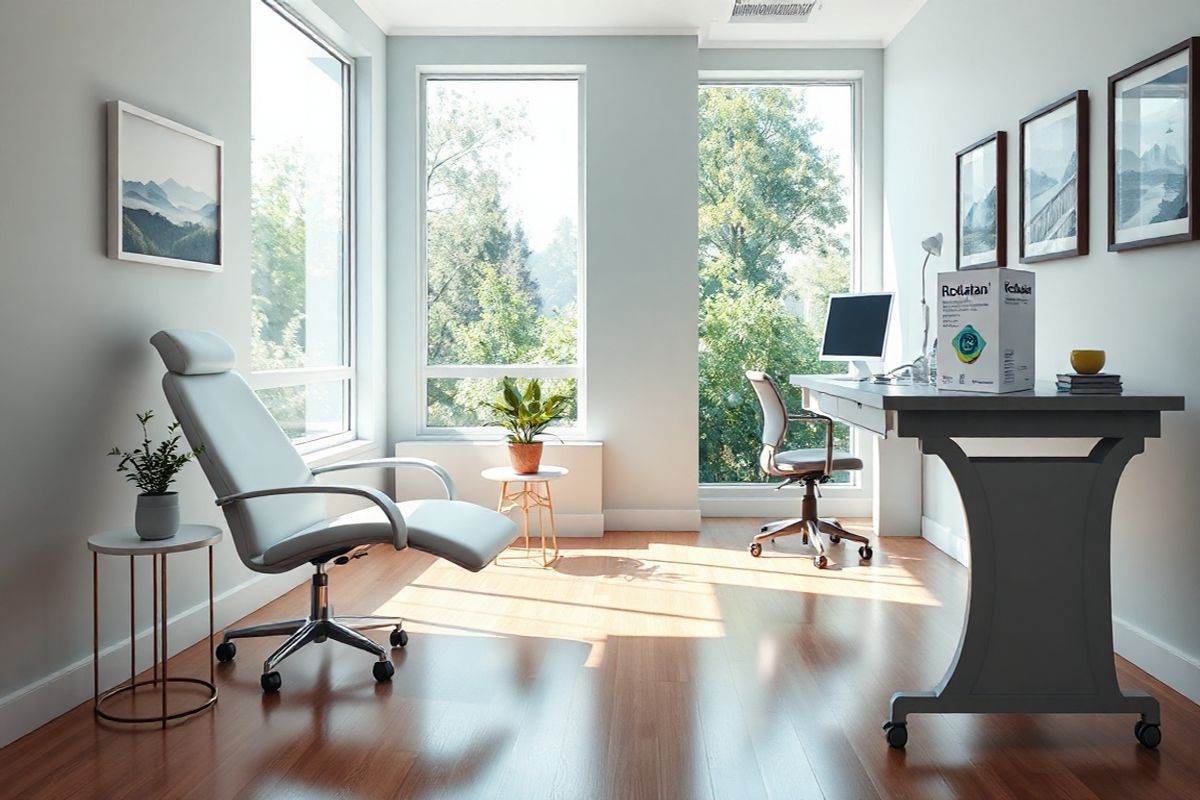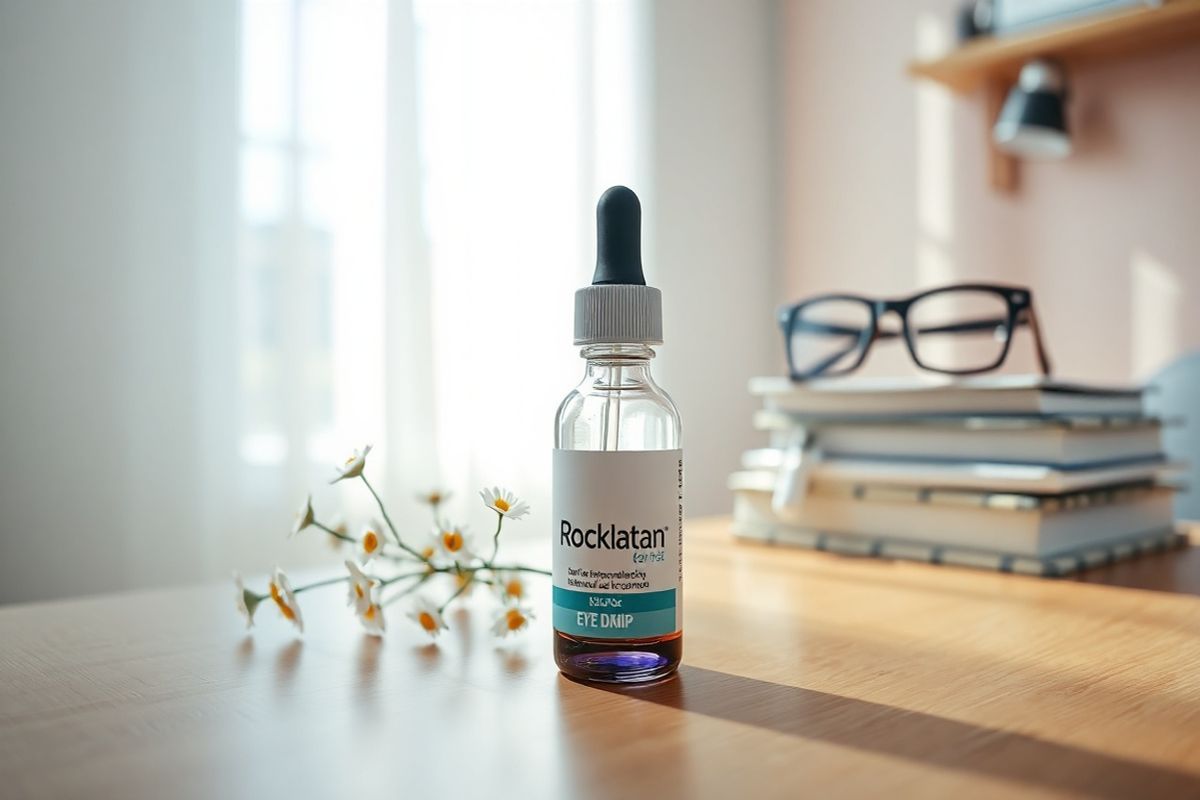Table of Contents
Understanding Rocklatan: A Dual-Action Eye Drop for Glaucoma

Rocklatan is a prescription medication specifically formulated to reduce intraocular pressure (IOP) in adults diagnosed with either ocular hypertension or open-angle glaucoma. It is unique in that it combines two active ingredients: netarsudil, a Rho kinase inhibitor, and latanoprost, a prostaglandin analog. This combination works synergistically to improve aqueous humor outflow, thus lowering IOP, which is crucial in preventing optic nerve damage and preserving vision (Medical News Today, n.d.).
The FDA approved Rocklatan in March 2019, marking it as the first eye drop to contain both a Rho kinase inhibitor and a prostaglandin analog. This innovation allows for a more effective approach to managing glaucoma compared to traditional monotherapy, which often involves either beta-blockers or prostaglandin analogs alone (Medical News Today, n.d.). The typical administration involves one drop of Rocklatan in the affected eye(s) once daily in the evening.
Mechanism of Action
The pharmacodynamics of Rocklatan hinge on its dual mechanism. Netarsudil enhances the outflow of aqueous humor through the trabecular meshwork by inhibiting Rho kinase, which is known to increase resistance to outflow. Conversely, latanoprost increases the uveoscleral outflow, facilitating a reduction in IOP. The combined action of these two agents allows for a more significant decrease in IOP than either agent used alone, thus providing a potent therapeutic option for glaucoma management (Liu et al., 2024).
What Are Allergic Reactions? Symptoms and Causes Explained
Allergic reactions are the immune system’s responses to typically harmless substances known as allergens. When an allergic individual comes into contact with an allergen, their immune system may overreact, producing antibodies that trigger a variety of symptoms ranging from mild to severe. Common allergens include pollen, pet dander, certain foods, and medications (Mayo Clinic, n.d.).
Symptoms of Allergic Reactions
The symptoms of allergic reactions can vary widely and may include:
- Mild Symptoms: Hives, itching, nasal congestion, sneezing, and watery eyes.
- Moderate to Severe Symptoms: Difficulty breathing, swelling of the face or throat, abdominal pain, or gastrointestinal distress.
- Anaphylaxis: A severe, life-threatening reaction that requires immediate medical attention. Symptoms include difficulty breathing, swelling of the throat, a rapid drop in blood pressure, and loss of consciousness (Allergy & Anaphylaxis Australia, n.d.).
Common Side Effects of Rocklatan: What to Expect

Like all medications, Rocklatan can cause side effects. While many patients tolerate the medication well, it is important to be aware of both mild and serious side effects.
Mild Side Effects
The most common mild side effects associated with Rocklatan include:
- Red Eyes: A common occurrence, with clinical studies showing that approximately 59% of users report this side effect (Healthline, n.d.).
- Eye Discomfort or Itchiness: Patients may experience mild irritation or discomfort upon instillation of the drops.
- Blurry Vision: Temporary visual disturbances may occur shortly after administration.
- Watery Eyes: Increased lacrimation is reported among users.
- Eye Pain: Some individuals note discomfort upon using the eye drops.
Serious Side Effects
Serious side effects are less common but can occur. These include:
- macular Edema: Buildup of fluid in the eye, which can lead to vision changes.
- Changes in Iris Color: Long-term use may lead to increased pigmentation of the iris, particularly in individuals with lighter-colored eyes.
- Allergic Reactions: Symptoms may vary from mild rashes to severe reactions that require immediate medical intervention (Healthline, n.d.).
Recognizing Allergic Reactions to Rocklatan: Key Signs and Symptoms
While Rocklatan is generally well-tolerated, some patients may experience allergic reactions. Recognizing these signs early can be crucial in managing them effectively. Symptoms of an allergic reaction to Rocklatan may include:
- Skin Reactions: Rash, hives, or flushing.
- Respiratory Issues: Difficulty breathing or swallowing, wheezing, or tightness in the throat.
- Swelling: Particularly in the face, lips, or tongue.
If any severe allergic symptoms occur, it is vital to seek immediate medical attention. Monitoring the body’s reaction after the first few doses can provide insights into potential allergic responses (Allergic Reactions: MedlinePlus Medical Encyclopedia, n.d.).
Managing Allergic Reactions to Rocklatan: Tips and Best Practices
Managing potential allergic reactions to Rocklatan involves several proactive measures:
-
Consult with Your Healthcare Provider: Before starting Rocklatan, discuss any known allergies to medications or eye drops with your doctor. This can help in tailoring treatment to avoid adverse effects.
-
Monitor Symptoms: Keep a log of any side effects experienced after starting the medication. Noting the severity and duration of symptoms can be helpful during follow-up visits.
-
Emergency Plan: If you have a history of severe allergic reactions, discuss with your healthcare provider the possibility of carrying an epinephrine auto-injector (e.g., EpiPen) for emergencies.
-
Avoid Mixing Medications: If using Rocklatan with other eye drops, ensure they are spaced out by at least five minutes to reduce the risk of adverse reactions (Rocklatan eye drops: Side effects, cost, storage, and more, n.d.).
-
Seek Immediate Help: If experiencing signs of anaphylaxis, such as swelling of the throat or difficulty breathing, call 911 immediately.
FAQ
1. What is Rocklatan used for?
Rocklatan is used to reduce intraocular pressure in adults with open-angle glaucoma and ocular hypertension.
2. How is Rocklatan administered?
Rocklatan is administered as one drop in the affected eye(s) once daily in the evening.
3. What should I do if I miss a dose of Rocklatan?
If you miss a dose, skip it and take the next dose at the regularly scheduled time. Do not double up to make up for a missed dose.
4. Can I use Rocklatan with other eye drops?
Yes, but you should wait at least five minutes between different eye drops to avoid washing one out with the other.
5. What are the potential side effects of Rocklatan?
Common side effects include red eyes, discomfort, blurry vision, and eye pain. Serious allergic reactions can also occur.
References
- Medical News Today. (n.d.). Rocklatan eye drops: Side effects, cost, storage, and more. Retrieved from https://www.medicalnewstoday.com/articles/rocklatan
- Liu, L.-C., Chen, Y.-H., Lu, D.-W., & Joachim, S. C. (2024). The application of Rho kinase inhibitors in the management of glaucoma. International Journal of Molecular Sciences, 25(11), 5576. Retrieved from https://doi.org/10.3390/ijms25115576
- Mayo Clinic. (n.d.). Allergies - Symptoms and causes. Retrieved from https://www.mayoclinic.org/diseases-conditions/allergies/symptoms-causes/syc-20351497
- Allergy & Anaphylaxis Australia. (n.d.). Allergic reactions
- Healthline. (n.d.). Rocklatan side effects: What they are and how to manage them
- Allergic Reactions: MedlinePlus Medical Encyclopedia. (n.d.). Retrieved from https://medlineplus.gov/ency/article/000005.htm











